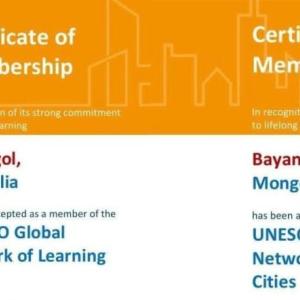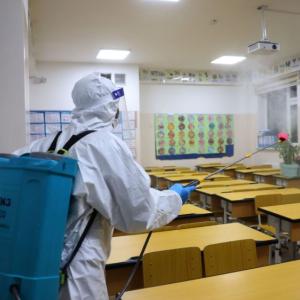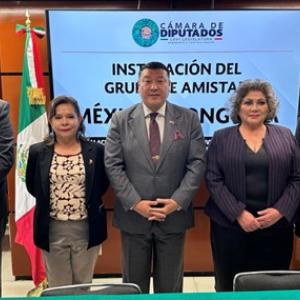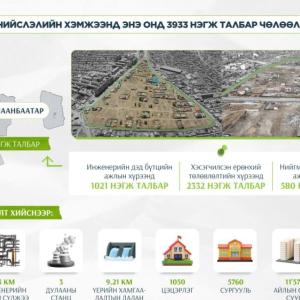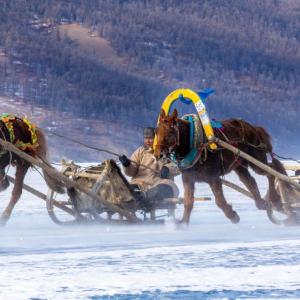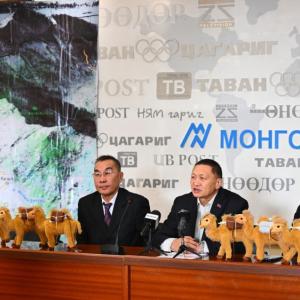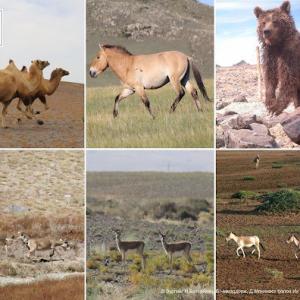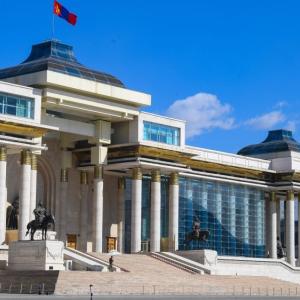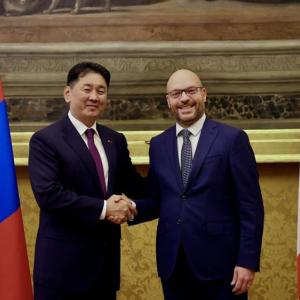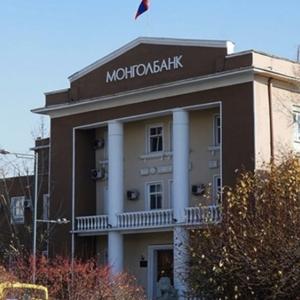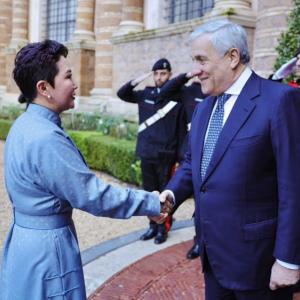Embracing Tradition: The Unique Culture of the Mongols to Protect the Nature
Interview
-In Observance of the World Water Day-
Ulaanbaatar, March 21, 2025 /MONTSAME/. The value of water, unique water culture of the Mongols, and many other issues were the topics we discussed with Mr. Batbayar Zeneemyadar, Director of the Water Department of Mongolia, known to many Mongols as “Usnii Batbayar” (or Aquaman Batbayar), a man dedicating his best efforts to protecting and developing Mongolian water resources.
For thousands of years, Mongols have practiced nomadic livestock breeding. We have a beautiful tradition of greeting one another by asking peace in pastures, mountains, and the surrounding rivers. Why do you think the Mongols use the phrase “Nutag us,” or “native lands and waters,” in our greetings?
In the 19th century, humanity discovered that water is made up of three atoms, two of hydrogen and one of oxygen. However, long before this scientific discovery, Mongols referred to water as the “Three Chandmani,” or the three gems, which were illustrated in images of gods, and even on the State Banner, since the 15th century.
Our people frequently use the phrase “mountain and water” in greetings and conversations, as mountains symbolize the physical world, and water represents the foundation of life. Together, they embody the essence of existence. When we read the history of Emperors of the Hunnu Empire and the Great Mongol Empire, including the words of Chinggis Khaan and other rulers, we see that water issues were prioritized in state policy. When greeting one another, Mongolians would inquire about the purity of the local waters and ask, “Are you enjoying a pleasant summer?”, which naturally include inquiries about the state of the land, water, and surrounding environment. This culture of asking about nature and the homeland reflects the unique characteristics of nomadic culture. It is an acknowledgment of the nomads’ deep dependence on and connection to nature. In contrast, greetings in other civilizations around the world rarely use phrases that depict the state of mountains, water, and homeland. Such phrases are nearly nonexistent. Instead, they typically revolve around personal well-being, such as “How are you?” or “How is your family?”
How abundant are Mongolia's water resources, and can water be considered a renewable resource?
It depends on how one defines “resource.” If we adhered strictly to our traditional nomadic lifestyle, herding livestock while moving with the seasons in search of clear water and fertile pastures, our water resources would have been sufficient. However, if we look at our current lifestyle, where we consume more water and pollute it, our water resources are inadequate. On top of that, water resources in Mongolia are unevenly distributed. For instance, the area around Khuvsgul Lake holds a large amount of water resources and receives ample precipitation. In contrast, the Gobi region has little to no surface water and has minimal precipitation. Noteworthy, water resources are generated from both underground water and precipitation.
In the 1950s, Mongolia began quantifying its water resources. It was estimated that about 610 cubic kilometers of water are formed annually in Mongolia. Unfortunately, according to data provided by the Ministry of Environment of Mongolia in 2022, this figure has decreased to 556 cubic kilometers. The main reason is the accelerated melting of permafrost and ice, resulting in a loss of 50 cubic kilometers of water. Khuvsgul Lake alone makes up seventy percent of Mongolia’s total lakewater reservoir, which amounts to 500 cubic kilometers. Rivers account for 36 cubic kilometers. Meanwhile, underground water, which we primarily rely on for consumption, comprises only 10.8 cubic kilometers, or 2 percent of our total water resources.
Surface water is not fully utilized, which makes it challenging to definitively classify Mongolia’s water reserves as either abundant or scarce. Unlike minerals, it is challenging to provide a precise measurement of water reserves. This statistics depend on what is measured and how it is measured at a given time. Water is a unique substance, perpetually in motion and existing in three states: solid, liquid, and gas. When it rains, about 10 percent of the precipitation seeps into the ground, 40 percent flows into rivers, and the rest evaporates.
On a side note, the Mongols’ emphasis on the number three may be related to their understanding and recognition of the three physical states of water, that is, solid, liquid, and gas.

Mongolia is a vast country with a small and widely dispersed population. Under such conditions, what kind of water management and policies would be most appropriate?
It all lies in protecting water resources. For example, looking at water-related provisions in the “Ikh Zasag Law,” or Great Yassa of Great Chinggis Khaan, it explicitly forbade washing clothes in running rivers and enforced this strictly, with execution as punishment. This reflects how nomads regulated their lives through customary norms rather than codified laws approved by legal science. The prohibition on washing clothes in rivers wasn’t about cleanliness, as some Western scholars have interpreted it to mean that Mongols were unhygienic. It was, in fact, about respecting and protecting water. The idea was that one must not disrupt the water cycle or pollute water, even through activities like washing clothes. Thus Mongols started limiting their use of underground water and protecting the surface water bodies. However, fencing off a lake and restricting access to it might not harness the full potential of the water. Instead, policies should prioritize conservation-based utilization. By using water sustainably, its benefits can be maximized.
Take Khuvsgul Lake as an example. The most effective way to protect it is promoting eco-friendly tourism. Revenue generated from tourism can then be allocated toward protecting the lake, which serves as the foundation of water policy. Protecting the Tuul River, on the other hand, involves allowing people to use the river’s water freely, while implementing a payment system to reinvest in the river’s preservation. To ensure water resources for the future, the principle must be to utilize water in a way that is both proper and rooted in conservation. For Mongolia, it is crucial to develop a policy that ensures the sustainable use and protection of rivers and water bodies without disrupting the natural balance. Historically, traditional methods of water conservation among Mongolians included quickly moving livestock away from areas affected by flooding, allowing nature to recover on its own. The nomadic way of life had a minimal environmental impact, leaving nature unpolluted. For example, when they returned to an area after a year, nature would have fully restored itself. However, with the shift to a sedentary lifestyle and half the population of Mongolia now residing in the capital city, this traditional way of protecting water is no longer feasible. Therefore, policies now focus on the sustainable and most efficient use of water resources to preserve them for future generations.
How effective have the government's measures to protect rivers and water resources been?
Let me use floods as an example. While floods can be dangerous, they are a natural process through which the earth cleanses itself. The key is to find ways to control and retain water during flooding. If we succeed in this, even during the next five years of drought, we’ll have the opportunity to restore our rivers and water resources. Since the distribution of water resources in our country is uneven, it is essential to focus on accumulating and evenly allocating water. The Government of Mongolia has carried out numerous projects, with both successful and less successful results. In 2004-2005, the daily water consumption of a person living in an apartment was 250 liters, while it was 8 liters for those in ger districts. Currently, apartment residents use about 130 liters per person, while the figure for ger district residents remains between 8-10 liters. Despite the increase in the number of apartments, water consumption was halved by installing water meters and reducing pipeline losses. Efforts are now being made to increase water consumption for households in ger areas. In the past, there were 300-400 operating water kiosks; today, the number of water kiosks has exceeded 800, with automatic water dispensers allowing residents to draw water at their convenience. The supply of water that meets hygiene standards is a notable improvement. Additionally, discussions are underway to enhance water usage in ger districts, expand clean and wastewater pipes, and upgrade the Central Wastewater Treatment Plant. Improvements to wastewater treatment plants in 14-15 aimags have greatly reduced environmental harm and amplified eco-friendliness. Efforts are also being made to mitigate the harmful effects of the Central Wastewater Treatment Plant on the Tuul River in Ulaanbaatar, home to over 50% of the population.
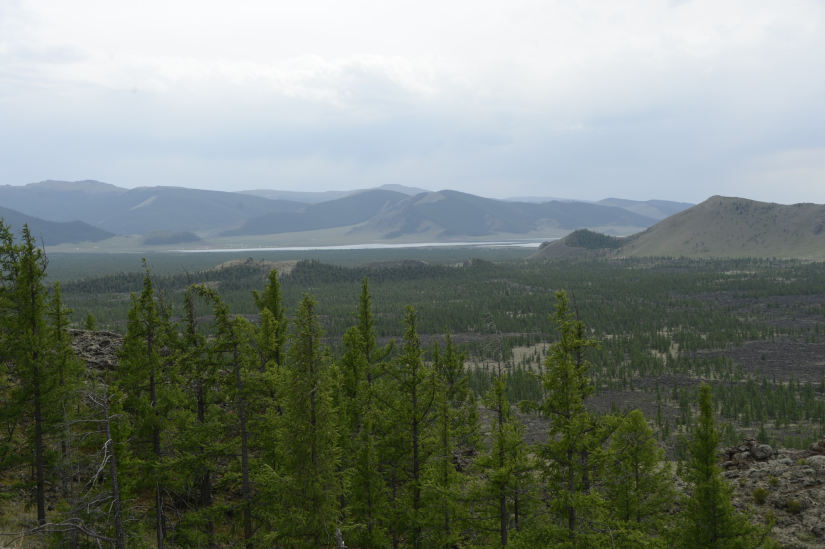
President of Mongolia initiated the "Billion Trees" National Movement. How will this National Movement impact water resources of the country?
It will have a profoundly positive impact. Some people argue that watering one tree requires 40 liters of water, and when multiplied by a billion trees, they claim there is not enough water. However, watering trees does not mean that the water is lost. This is equivalent to replenishing the underground water and soil. When you water a tree with 40 liters, 10 liters are absorbed by the tree, and the rest soaks into the ground. The 10 liters absorbed by the tree travel through its roots, trunk, and leaves, leading to the process of photosynthesis, which will produce oxygen and absorb carbon dioxide. If we succeed in planting billions of trees, we will enhance air quality and the water cycle. The more trees we water, the more support we give to the natural water cycle. There has been no initiative as large as the “Billion Trees” movement in the 21st century. By implementing this monumental and effective policy, we will improve the connection between surface water and underground water.
The Water Department of Mongolia supports the “Billion Trees” Movement and is working on the “333 Lakes” program, aiming at establishing a lake in every soum. When it rains, rainwater often runs through the gorges next to each soum. By collecting this water and creating small lakes or ponds, we can store it, plant trees around it, and create green parks. Planting a single tree or plant contributes to enriching both water and air resources.
Most of the surface water in our country flows outward. Does this mean that Mongolia plays a major role in the water resources of neighboring countries?
Many people call Baigal Lake as Lake Baikal. “Baigal” is a Mongolian word meaning "embodiment of Mother Nature." Only 3% of the world's total water is fresh, half of which is ice that makes up 1.5%. Of the remaining 1.5% of surface water, 20% is concentrated in Lake Baikal. Fifty percent of the water flowing into Lake Baikal comes through the Selenge River. Indeed, Mongolia plays a vital role not only in the water resources of our neighboring countries but also in the global supply of freshwater. Seventy percent of the total water outflow from Mongolia is carried through the Selenge River.
Moreover, one of the ten largest rivers in the world, the Yenisei River, originates in Mongolia. Specifically, the Shishget River crosses the border to become the Little Yenisei, which flows through Kyzyl and merges with the Yenisei River. The Shishget River originates from the northern slopes of the Ulaan Taiga Mountain, while the Delger River originates from its southern slopes. When the Delger River merges with the Ider River, it forms the Selenge River, which flows into Baigal Lake and continues through the Angara River to the Yenisei. Thus, rivers originating from the Ulaan Taiga Mountain fall into the Yenisei River. Mongolia plays a critical role in the surface water network of Central Asia.
Similarly, the Ob River in Russia is referred to as the Irtysh River on maps. Its original name is "Erchis," and it originates from the Yolt River near the Tarbagatai Range, where the capital of the Western Mongols' Zuun Gar (Dzungar) Khanate was located in the 15th and 16th centuries. The Irtysh begins near the Yolt River and north of the Altai Mountains lies the Khovd River, while south of the range is the Bulgan River. As it flows through China and into Kazakhstan, it becomes the large Urungu River and creates Ulungur Lake. To the east, the Onon River becomes the source of the Amur River, while the Kherlen River sustains Lake Hulun.
In this day, Mongolia’s surface water network profoundly influences the water resources of its two neighboring countries in ways beyond comparison. If these rivers were to dry up or experience flooding, it would pose severe risks. Water issues should not be confined by political borders; they represent shared resources of the human-kind. In the nomadic worldview, the concept of "children of the same river" emphasizes collective responsibility for our future. For instance, whether someone is born in Baganuur along the Tuul River or in Zaamar soum of Tuv aimag, they are “children of the same river.” Modern terminology refers to this as integrated water resource management, but Mongols have long expressed this as a unity of spirit and life, encapsulated in the phrase "children of the same river."
Do Mongolia’s glaciers and permafrost feed many major rivers which originate here?
Yes, absolutely. Natural phenomena cannot be understood in isolation. For example, when treating the human body, Western medicine often specializes in individual organs without considering how treating the kidneys might affect the ears. In contrast, oriental and traditional Mongolian medicine diagnose and treat the body as an integrated whole. Similarly, rivers cannot be viewed in isolation.
This is why global water experts advocate for integrated policies among neighboring nations. Mongolia has achieved significant progress in this regard. During a recent visit by the President of Russia, the two countries’ ministers of ecology and environment signed a memorandum of understanding to protect Lake Baigal and the Selenge River. This joint effort to protect a specific body of water serves as a model for international cooperation. While border disputes over shared water resources are common globally, Mongolia’s peaceful foreign policy allows it to maintain harmonious relationships with its neighbors despite differences. This enables further mutually beneficial collaboration.

What possibilities do there exist for improving the potable water supply for the capital city’s population?
There are several options. One possibility is to build a reservoir on the Tuul River to store floodwaters for non-drinking purposes. Currently, we use clean water for everything— car washing, toilet flushing, leather processing, power plants, and more. Instead, we should use underground water exclusively for drinking. For example, wastewater from households and food production could be reused for leather processing. By creating reservoirs and recycling water, we can shift to more sustainable water use. For example, reusing wastewater from companies like APU or Coca-Cola could benefit both parties. Discussions are underway to supply Coca-Cola’s wastewater to the Amgalan Power Plant. Currently, the company pays over one billion MNT annually to discharge its wastewater into the sewer system, but by redirecting it to the power plant, they could save money. Similarly, Gobi Company could save money by using treated wastewater instead of purchasing clean water at a high cost. Improving water usage, creating a circular system, and fostering a wastewater business are my goals.
The capital has over 370,000 rooftops. On average, if each roof is 100 square meters, a 20-minute rainfall could collect approximately 670,000 cubic meters of water. For comparison, the Dalanzadgad soum in Umnugobi aimag uses about 700,000 cubic meters of water annually. This highlights the importance of recognizing the value of water not just economically but also socially, culturally, and spiritually. Unfortunately, Ulaanbaatar currently lacks any infrastructure to collect rooftop rainwater. Currently, the city consumes around 300,000 cubic meters of water daily, which is expected to rise to one million cubic meters by 2040. Since our supply capacity is only around 450,000 cubic meters, building reservoirs is the one and only solution.
One notable example comes from Dalandzadgad soum, the first aimag center to have a swimming pool. It is wonderful that children in the Gobi region are learning how to swim. However, the pool water is drained into the sewer system. Instead, this water could be reused by car washes in the soum. Promoting water reuse requires greater awareness among citizens and businesses, along with stronger efforts to start recycling.
Although the global community has embraced the use of treated wastewater, Mongolians, who have traditionally consumed pristine clean water, remain sceptical. How can this mindset be changed?
Let me tell you a story of when I got scolded by a woman. She angrily asked me why I insisted that her car be washed with used water. The reality is that water is more valuable than a car. Ironically, that same woman would drive her car through puddles of wastewater contaminated by pit latrines but refuses to use recycled water, which is an illogical thing to do. Each person only needs 5 liters of fresh water daily for drinking, while other needs can be met with recycled water. For example, in hotels in neighboring China, you’ll find two bottles of drinking water because the tap water is recycled and not suitable for drinking. We used the showers there without issue, yet back home, we resist the same practice. The fact that we are not protecting the water that our children would one day consume is not specifically the fault of the people like the woman I mentioned before, but rather, it is a case of not providing enough information on this topic. If we want the Tuul River to remain pristine for the next 100 years, we must protect it. Protecting it does not mean staging protests but rather educating people on how to use tap water responsibly.
European Alpine water is considered high-quality and is directly consumed via copper pipes. Could you please elaborate on the mineral content and quality of Mongolia’s water?
The quality of water largely depends on its source. Mongolia's vast landscape, comprising mountainous, steppe, and desert regions, offers water with distinct characteristics. For instance, in the Gobi region, mineral-free fresh water is often considered “spring water,” whereas in mountainous areas, mineral-rich fresh water is so abundant that it is also called “spring water.” A great example of the pristine quality of Mongolia’s water is the Altan Tevsh Valley (also known as Khun Chuluu Khonkhor).
However, about 30 soums in Mongolia face challenges in meeting drinking water quality standards. For instance, Zavkhan aimag, home to the legendary "blue folks" of Zasagt Khaan, got its name due to the prolonged use of highly mineralized water, which affected the moisture and color of the people’s skin. In general, Mongolia’s water resources are rare and remarkably clean on a global scale, but the challenge lies in managing, storing, collecting, and wisely utilizing this vital resource. One striking example is Lake Gegeen, formed by the melting glaciers of Otgontenger Mountain in Zavkhan aimag. The water from this lake is diverted 46 kilometers to supply excellent quality water to Altai soum, also known as Yesunbulag soum in Gobi-Altai aimag. Since the water is transported over such a distance, it costs residents MNT 5 per liter. While we have successfully redirected water for use, it is time to advance these efforts scientifically and technically by investing in infrastructure, such as copper pipes, and modernizing management strategies.
Historically, Mongols extensively used silver bowls, not as a luxury as some might think, but because silver purifies water. People would leave water in silver bowls overnight and drink it in the morning for its benefits.

What are the three critical steps that every Mongolian should take to protect and preserve our pristine water sources?
The first step is to ask oneself: "Who does water belong to?" If the answer is "our children and future generations," we must internalize this responsibility.
Actions such as turning off the tap while brushing our teeth, collecting rainwater from rooftops, or watering plants with rice-washing water can create a tremendous difference. A change in mindset is crucial. Nomadic culture views life as eternal and cyclical, unlike urban lifestyles where one believes life ends with oneself.
Second, businessmen should recognize that preserving water resources is essential for sustaining profits over 20–40 years. For instance, a real estate developer's key objective is to increase the value of their properties. If the Tuul River becomes polluted or runs dry, property values near the river will plummet. To ensure long-term profitability, investing in water conservation is imperative, as all sectors are interconnected with water. For example, shopping malls with clean restrooms see longer customer visits and higher sales. In 2003-2004, a study of one shopping center found that the number of daily visitors increased only slightly from 22,000 to 23,000 after restrooms were renovated. However, the time they spent in the mall increased, boosting food sales revenue by 40-50 percent.
Third, a nation exists to ensure a better life for its citizens, now and in the future. The foundation to this is water. No matter how luxurious a home or high-paying a job is, it becomes meaningless without clean water. Thus, governments, citizens, and businesses alike must prioritize water conservation. Agriculture inherently supports the natural water cycle, as livestock and crops return nutrients to the environment, unlike other industries. Therefore, we must collectively invest in water and protect rivers and lakes together.
How can we define the economic value of the Tuul River?
Of course, the Tuul River is valuable to us as we still utilize it today. Currently, the economic value of the Tuul can be said to be equal to the existence and sustainability of the capital city and perhaps even Mongolia as a whole. Water is incomparable and irreplaceable by anything else. If we were to assign a monetary value, the combined economic outputs and revenues of all of us would represent the value of the Tuul River. The Tuul River flows from Terelj to Tsonjin Boldog in pristine condition. Starting from Nalaikh, it begins to show slight pollution, which increases further downstream from Zaisan Bridge. By the time it reaches Songino Bridge, it becomes heavily polluted. From there, as it flows through Altanbulag, Undurshireet, and Lun for 100 kilometers, the river marginally selfpurifies, but by the time it reaches below Lun Bridge and further toward Zaamar, it becomes one of the most stressed rivers in the world.
The economic value of water lies in the benefits derived from its utilization. For instance, the demand for large windowed apartments with river views exemplifies the Tuul River’s economic impact. Approximately 80% of Mongolia’s GDP could arguably be tied to the value generated by the Tuul River.
I heard that it is possible to establish three reservoirs on the Tuul River. When will this translate into reality?
There are many challenges that we face to make this happen. The first challenge is to determine which of the three proposed sites to choose from. The farthest viable location is 80 kilometers from the capital city, but the cost of building pipelines over such a distance is prohibitive. Locations in closer proximity are already inhabited, which presents another obstacle.
The main challenge, however, is financing. Investors cannot claim ownership of water. The legal framework ensures that water belongs to the State and its people, making profit-driven investments risky. For example, constructing a reservoir requires over USD 500 million, about 10 percent of Mongolia’s annual budget. Therefore, intelligent and legally sound investments are crucial to avoid compromising public ownership of water resources.
This issue requires not only financing but also foresight and innovation. Additionally, beyond the Tuul River, critical discussions are needed regarding other major rivers such as the Kherlen, Orkhon, Khovd, Egiin, Baydrag, and Onon. Thorough economic, social, and scientific research is necessary to address these issues. The new effects of climate change must also be analyzed. As a result, it will require precise engineering solutions.

In my understanding, a project initiated by the Millennium Challenge Corporation (MCC) aims to provide wastewater to power plants instead of underground water. How is this investment made sustainable? Are the engineers and technicians prepared to operate this facility?
There is no concern regarding the project’s personnel. The MCC’s discovery of new water reserves in the Biokombinat and Shuvuun areas prevented Ulaanbaatar from facing a drinking water shortage by 2030. The plan is to recycle the treated wastewater from the Central Wastewater Treatment Plant through the Wastewater Recycling Plant to supply it to power plants. Power plants do not require clean water for ash removal. On account of the MCC project, water reserves have been increased, and water reuse systems have been introduced, potentially saving 50,000 cubic meters of water daily. Upon project completion, the third and fourth power plants will receive 50,000 cubic meters of recycled water daily.
Additionally, discussions are underway for Amgalan Power Plant to utilize wastewater from the Coca-Cola Company. This marks the start of water reuse practices with visible benefits. For instance, the fourth power plant currently pays around MNT 600 million annually for clean water. Discontinuing this usage would save that cost. From an economic perspective, the work being undertaken by MCC is an invaluable contribution. While it is true that the water sector faces a shortage of skilled professionals, this can be addressed in the short term. In fact, during MCC’s three to four years of operation, the number of students specializing in water studies at the Mongolian University of Science and Technology has increased. However, it still concerns me that there has been no increase in students studying surface water, underground water, or water engineering.
It is said that only 16 percent of Mongolia's groundwater reserves have been surveyed. What progress has been made on the remaining areas?
To date, 17% of Mongolia's territory has undergone underground water surveys, and over 80% has been subjected to geological studies. The failure to conduct water exploration over the past 30 years is a critical problem. While we have focused on searching for gold and copper, we have neglected water exploration. Water may be found wherever the ground is excavated, but it is essential to determine how much water is needed and ensure continued groundwater exploration. With increased funding, further underground water exploration will be conducted. Determining whether adequate water can be found, whether it meets drinking water standards, and whether to allow its use in mining will require thorough assessment. Full identification of water reserves is essential. To do this, we need a comprehensive understanding of our water resources. We must locate the water, manage it, and aim to expand our current coverage of 17 percent to 50-60 percent in the next decade.
How is the Central Wastewater Treatment Plant operating, and is it meeting standards?
The Central Wastewater Treatment Plant, with a capacity to process 170,000 cubic meters of water per day, is performing exceptionally well. Unfortunately, we waste over 200,000 cubic meters daily. For this reason, we encourage reusing water at car washes. Reducing the volume of wastewater entering the treatment plant would allow for better purification and reduce pollution in the Tuul River. This, in turn, would lead to fewer respiratory illnesses among children and reduce hospital burdens. Encouraging people to turn off taps while brushing their teeth might seem trivial, but collectively, such measures could reduce the treatment plant’s workload, improve water quality, and contribute to a healthier environment for all.
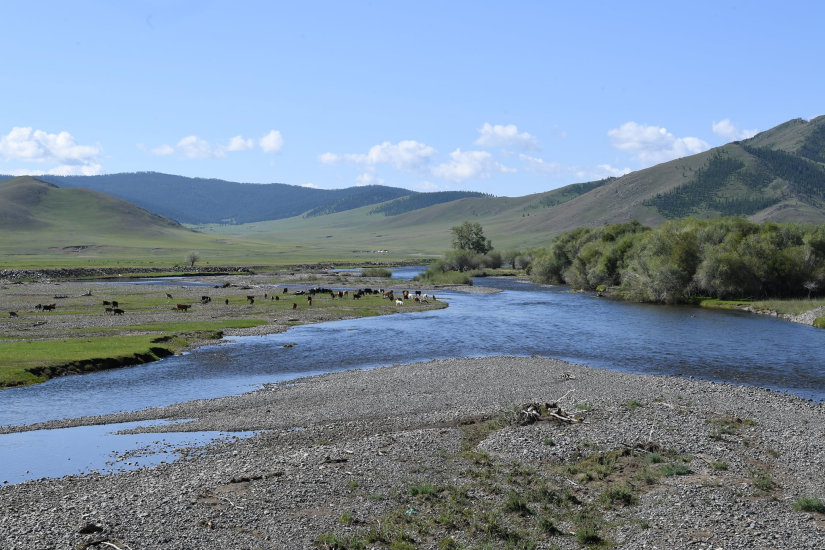
Mongolians have a unique perspective on water rooted in nomadic culture. How is this perspective evolving in modern times?
It is changing dramatically. When I graduated in Hungary and worked in Mongolia with a French scientist in 2005, he remarked, "Mongolians don’t need environmental laws. If you follow your traditions, you protect nature exceptionally well.” At the time, as a young lawyer believing everything should be regulated by law, I did not fully grasp the weight of his words. As I reflect now, I realize that preserving and educating others about our traditions related to water and nature could have been invaluable. For instance, traditions include not muddying spring sources, avoiding construction near springs, refraining from pouring milk, blood, or dirty containers into water, and not visiting springs at night.
A renowned Japanese scientist once shared something intriguing. During a lecture, he said, 'It seems Mongolians inherently know what I am trying to prove—that water is alive.' He referenced practices like scattering water three times in a counterclockwise direction to calm a crying baby or using water to ease an infant’s unsettled mind. He further noted, “The idea that water is alive aligns with your tradition of using it to absorb negative energy and scattering it away.” As descendants of people with such strong traditions and culture, it is regretful that we are forgetting them. We must preserve and continue these practices. Unfortunately, something as simple as riding a horse is not practiced so often, and we stopped using idioms “Mori Kharakh,” or “Seeing a Horse.” The rapid transition from nomadic to sedentary life has left us lost between two civilizations. It is essential to retain as much of our nomadic heritage as possible.
Children raised listening to morning prayers at Ganga Lake or seeing milk offerings to mountains and rivers will never desecrate or destroy a lake. Yet, today, we see milk offerings made through window sills, leaving cars dirty, which some explain in terms of material damage. When people go from making offerings near their horse tethering posts to doing so from apartment windows, the meaning of the tradition is lost. At the very least, we should preserve traditions related to water, from rivers, and lakes, to springs. Initiatives like fencing spring sources have been effective. Expanding protection zones and planting riparian forests are also planned. Our ancestors knew that protecting a spring’s headwaters would revive springs. While some traditions may be lost, we must safeguard what remains.
What is the global attitude towards water?
The approach to water varies greatly among countries, with each country tailoring its water management and engineering strategies to suit its unique circumstances. Coastal communities focus on interacting with the sea, while those in high-altitude areas grapple with issues such as melting glaciers. The Dutch mindset revolves around protection from floods and managing large water volumes; their iconic windmills serve as tools for draining underground water. In Australian coastal cities, safeguarding against oceanic hazards is crucial, whereas inland residents prioritize water sourcing and conservation. Israel discusses desalinating seawater and transporting it to arid regions, while Hungarians, living along two major rivers, address flood defense, and those in central dry regions concentrate on integrating drought and flood prevention strategies. Discussions about melting permafrost would not be a topic of interest for our northern neighbors in Russia. Thus, we must devise a water management approach that aligns with our conditions. This summer, Ulaanbaatar experienced floods, and the Selenge River's water level rose, yet in places like the shores of Shishget River and Lake Tsagaan, there was no grass to harvest. Our water management strategy should be adapted to address such disparities. Our approach to water must change, integrating scientific principles with traditional knowledge to create context-appropriate solutions.
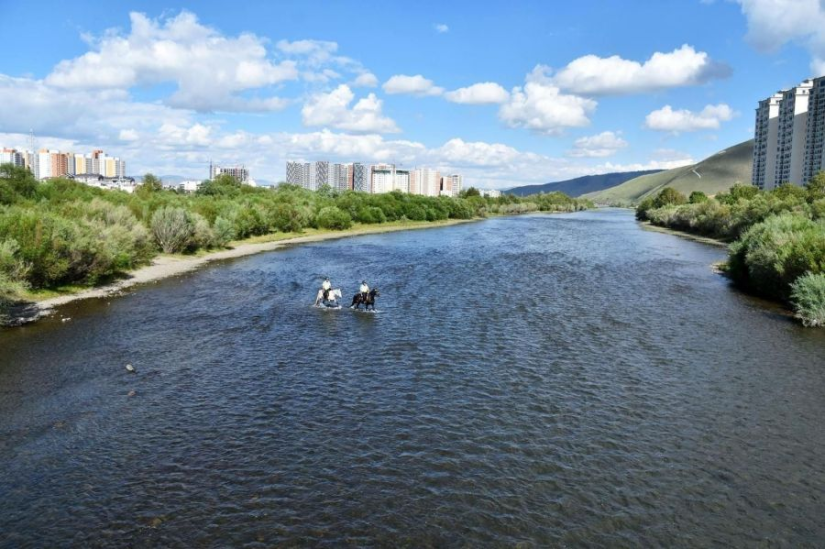
What happened to the project funded by the European Bank for Reconstruction and Development (EBRD) to establish a pre-treatment facility in Emeelt?
Plans are underway to relocate the leather processing plants to Emeelt. These factories currently discharge significant pollution into the Tuul and Dund rivers, overburdening the Central Wastewater Treatment Plant, which is designed to handle only household wastewater, not industrial effluent. Consequently, moving the factories to Emeelt is a positive development. Moreover, discussions are ongoing about utilizing water produced by MCC plants. Several decisions are expected shortly. The MCC has revised wastewater standards to facilitate the collection of pollution fees, which requires pre-treatment facilities at leather factories. This likely necessitates their relocation to Emeelt. Doing so could reduce the environmental and water-related harm near the capital by 40-50%.
Besides your heart and passion for water, you are also an able diplomat. What do you consider your most notable accomplishments during your term as the Mongolian Ambassador to Hungary?
I fondly recall my tenure as an Ambassador, emphasizing that Ambassadors are not mere officials but representatives of their nations and protectors of their citizens. Responding to your question, I would focus on three key areas. First, during my appointment in Hungary, the number of Mongolian students studying there increased from 70 to 1,200. While I wasn’t directly responsible for this, it remains a point of pride. Following his visit to Mongolia, Hungarian Prime Minister Viktor Orbán committed to annually receiving 1,200 students, a major investment. Second, I contributed to leveraging sports as a diplomatic tool in Mongolia’s foreign relations and soft power strategy. My tenure coincided with the hosting of numerous World Championships across various sports. Third, considering the 20th-century history of Mongolian-Hungarian relations, Hungary showed substantial support for Mongolia’s development through initiatives such as the Biokombinat and water and geological exploration projects that resulted in 30,000 wells for pasture irrigation. Although only a few, like the Hungarian “Horsehead” wells, remain, I sought to collaborate with Hungary on water projects for the Baidrag and Kherlen Rivers, though these have yet to materialize. Modern Ambassadors represent not just their governments but also their nations’ cultures, sports, and people, including students and ordinary citizens.
Being an Ambassador involved many fulfilling and emotional moments. However, the COVID-19 pandemic brought unprecedented challenges. During its initial phase, I feared for the safety of Mongolian students. When the first COVID-19 case was recorded, a frantic student called, saying she was quarantined. The most harrowing experience was helping a pregnant woman infected with COVID-19; her child was delivered prematurely via surgery, and she was placed in an incubator. When her husband, who did not speak the local language, accompanied me to the hospital, the doctor regretfully said there was no choice but to disconnect the incubator. Conveying this to her husband was one of the most heart-wrenching tasks. The pandemic claimed the lives of four mothers under our watch. Diplomatic work often entails unseen hardships and joys, and the efforts of generations of diplomats are not always apparent. Their work, which often bears fruit long after six or seven months, carries lessons for all diplomats, myself included.

Mongolian studies are well developed in Hungary. How is the younger generation of Mongolist scholars being prepared?
Each year, about ten students enroll in the Mongol Studies program in Hungary. It is inspiring to see so many Hungarians deeply interested in and captivated by Mongolian language and culture, to the point of being “infatuated” with it. Back in 2007-2008, I accompanied a group of around twenty European visitors to the Altanbulag soum of Tuv aimag, where we were hosted by a local family with khorkhog and boodog. When my guests expressed interest in visiting an ordinary Mongolian household, we stopped by a random home along the road. The head of the household, a middle-aged man, asked, “Where are these Russians from?” By “Russians,” he was referring to foreigners in general. As I began introducing them as French, Czech, and Polish, I mentioned that two of them were Hungarians. Upon hearing this, the man remarked, “Oh, so these two aren’t Russians after all.” Essentially, he meant they weren’t truly foreigners. While the man didn’t comment on the other nationalities, his specific reaction to the Hungarians left me intrigued and wondering why he had said such a thing. Historically, records of the first Hungarians appeared around the 4th century near the Ural Mountains. By the 8th century, they had settled in the Carpathian Basin and established their state in 996. Among Hungarians, there are groups who identify themselves as descendants of Attila the Hun or as Avars, also known as Rouran. It is fascinating to note that the farthest eastern boundary of the great nomadic civilizations was the Korean Peninsula, while the westernmost boundary was present-day Hungary. This connection affirms that we share a kinship and a common origin. Mongol studies in Hungary are a part of their quest to trace their ancestral roots. I believe Mongol studies in Hungary will continue to develop and expand in the future. Similarly, we must also strive to advance Hungarian studies in Mongolia and increase the number of Mongolians proficient in the Hungarian language. Interestingly, over 250 words in Hungarian and Mongolian share identical pronunciation, meaning, and tone. For instance, “kharanga” (large bell) is “khorongo” in Hungarian, and colors like “shar” (yellow) and “bor” (brown) are “shargo” and “borgo,” respectively. Studies conducted in the 1880s found approximately 2,500 similar words, suggesting close kinship between our peoples. Among European nations, Hungary has the longest history as a state, while other countries, like France, despite their long-standing presence, have not maintained a statehood history as extensive as Hungary’s. Positioned in the heart of Europe, Hungary, with its deep connection to Mongolia, provides us with a unique advantage in fostering relationships.
 Ulaanbaatar
Ulaanbaatar








